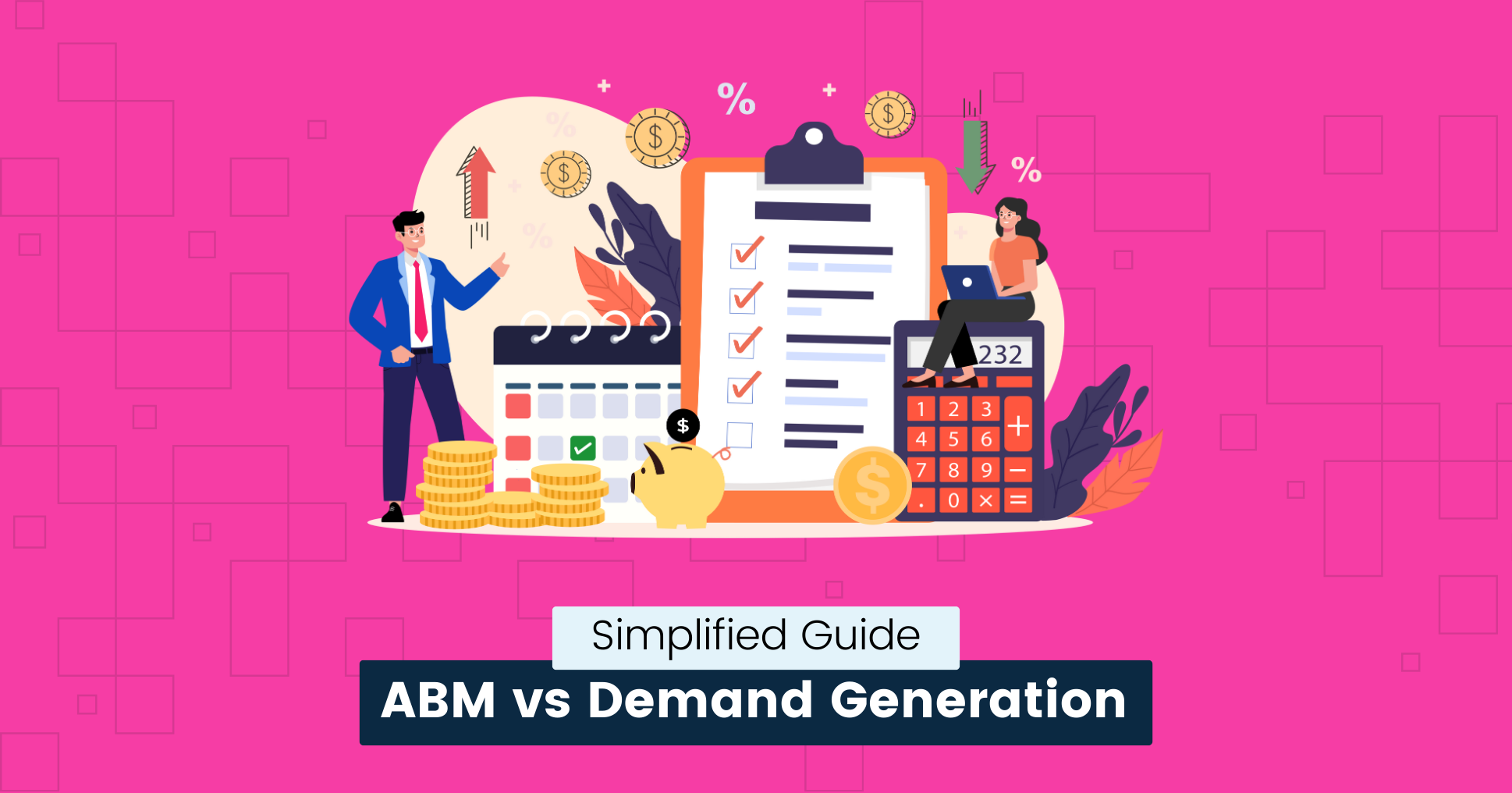Account-Based Marketing vs Demand Generation Simplified Guide (2024)
Account Based Marketing (ABM) and Demand Generation are SaaS marketing strategies important for B2B lead generation.
But which one should you choose for your SaaS product?
This guide breaks down the core principles of both marketing tactics to help you understand your SaaS marketing strategy effectively for successful business growth.
Here’s what you’ll learn:
- What is ABM?
- What is Demand Generation?
- ABM VS Demand Generation: Which one is better?
- Can you combine both?
- Which strategy should you choose?
Let’s get started.
What is Account Based Marketing?
Account Based Marketing (ABM) is a B2B growth strategy to target specific individual accounts that match the ideal customer profile (ICP).
Unlike regular marketing, which focuses on outreach campaigns to attract a broader audience, ABM involves collaboration between marketing and sales teams to target a select group of highly qualified accounts.
You will usually focus on a few accounts with high revenue potential.
All marketing efforts are customized to meet the individual needs of targeted accounts.
It involves:
- Targeted approach to increase conversion and ROI.
- Personalized emails, ads, or content to increase engagement.
- Outreaching several decision-makers per account, usually across different channel
- Finding relevant leads using LinkedIn Sales Navigator advanced filters.
- Outreach leads over LinkedIn. You can check out our Phantombuster automation template for inspiration.
- Tracking of SaaS marketing metrics at the account level for optimization of marketing campaigns.
What is Demand Generation?
Demand Generation is a B2B marketing strategy that creates interest and generates demand for a product or service.
Unlike ABM, which targets specific individual accounts, Demand Generation aims to attract leads across a broader audience.
Demand Generation strategies involve various marketing channels you can use to promote your SaaS product across a large audience.
Such as:
- Leverage social media platforms to increase brand awareness.
- SaaS email marketing to nurture leads.
- Content marketing includes blog posts, videos, and webinars to engage potential customers.
- Pay-per-click (PPC) ads to reach targeted audiences.
- SEO to improve ranking and drive traffic.
- Launching your SaaS on Product Hunt using the Product Hunt launch template
As a SaaS company, you can use Demand Generation to create a steady flow of leads into the sales funnel and nurture prospects through the buyer’s journey to convert them into loyal customers.
Account Based Marketing vs Demand Generation: Which one is better?
Both ABM and Demand Generation are powerful marketing strategies for revenue growth, each with a different approach and goal.
Here are the key differences between them:
Target Approach
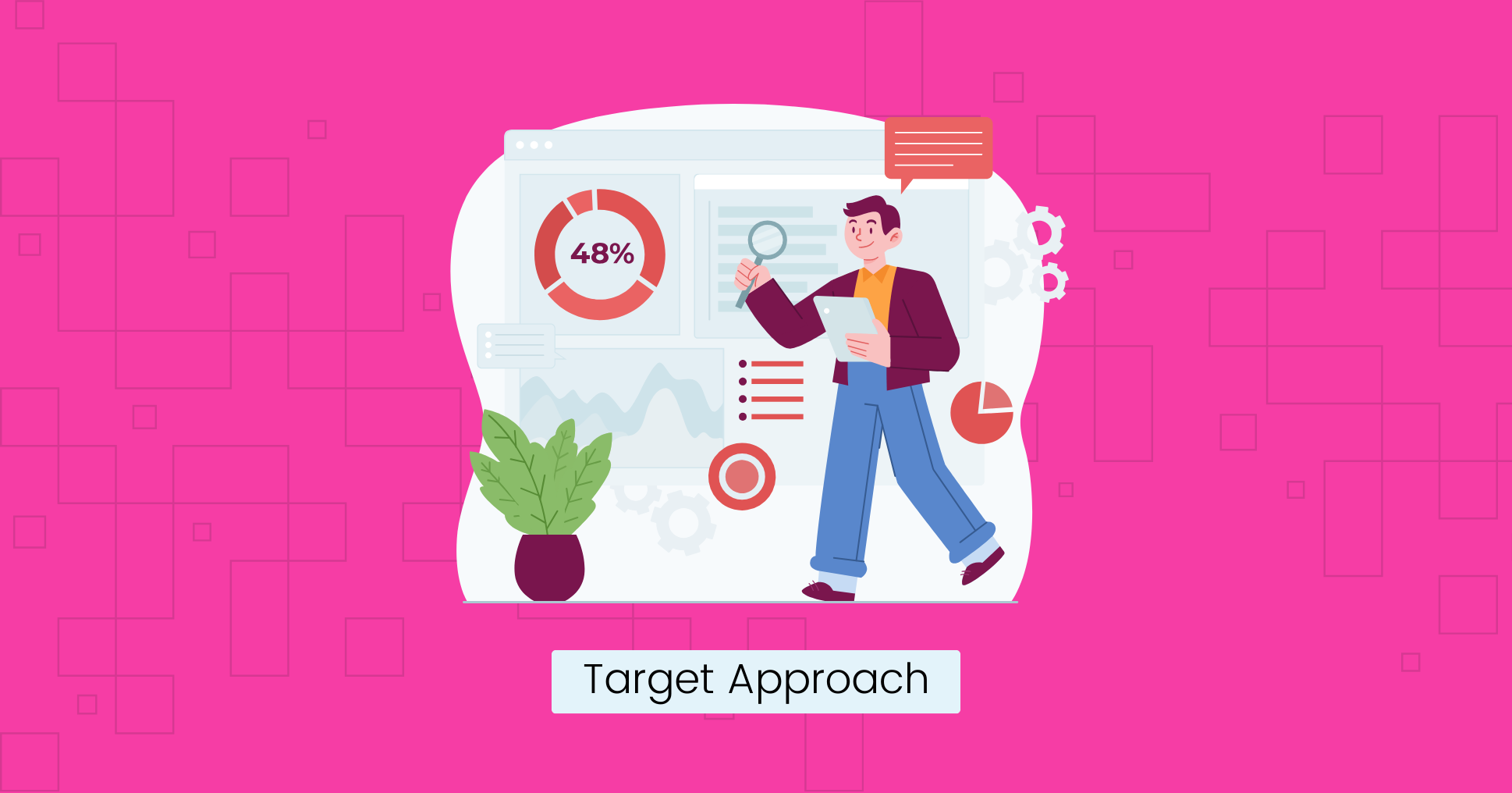
Account Based Marketing targets specific, high-value accounts, focusing on personalized marketing and engagement for each targeted account.
The main objective of the ABM approach is the quality of accounts instead of quantity so you can target accounts already looking for your SaaS services with highly personalized marketing efforts to address their specific needs.
For example, you can filter accounts based on job title or company name using LinkedIn automation templates with a tool like Phantombuster to find highly qualified leads.
Demand Generation casts a wider net to target a broader audience of potential leads.
The goal is to create interest and awareness of your company’s products or services across a larger pool of prospects with more generalized marketing efforts to attract leads at various stages of the buyer journey.
For example, if you’re selling a new SaaS product, you can create content like blog posts, webinars, or ads to attract all kinds of customers, not just a few select accounts.
Metrics for ABM vs Demand Generation
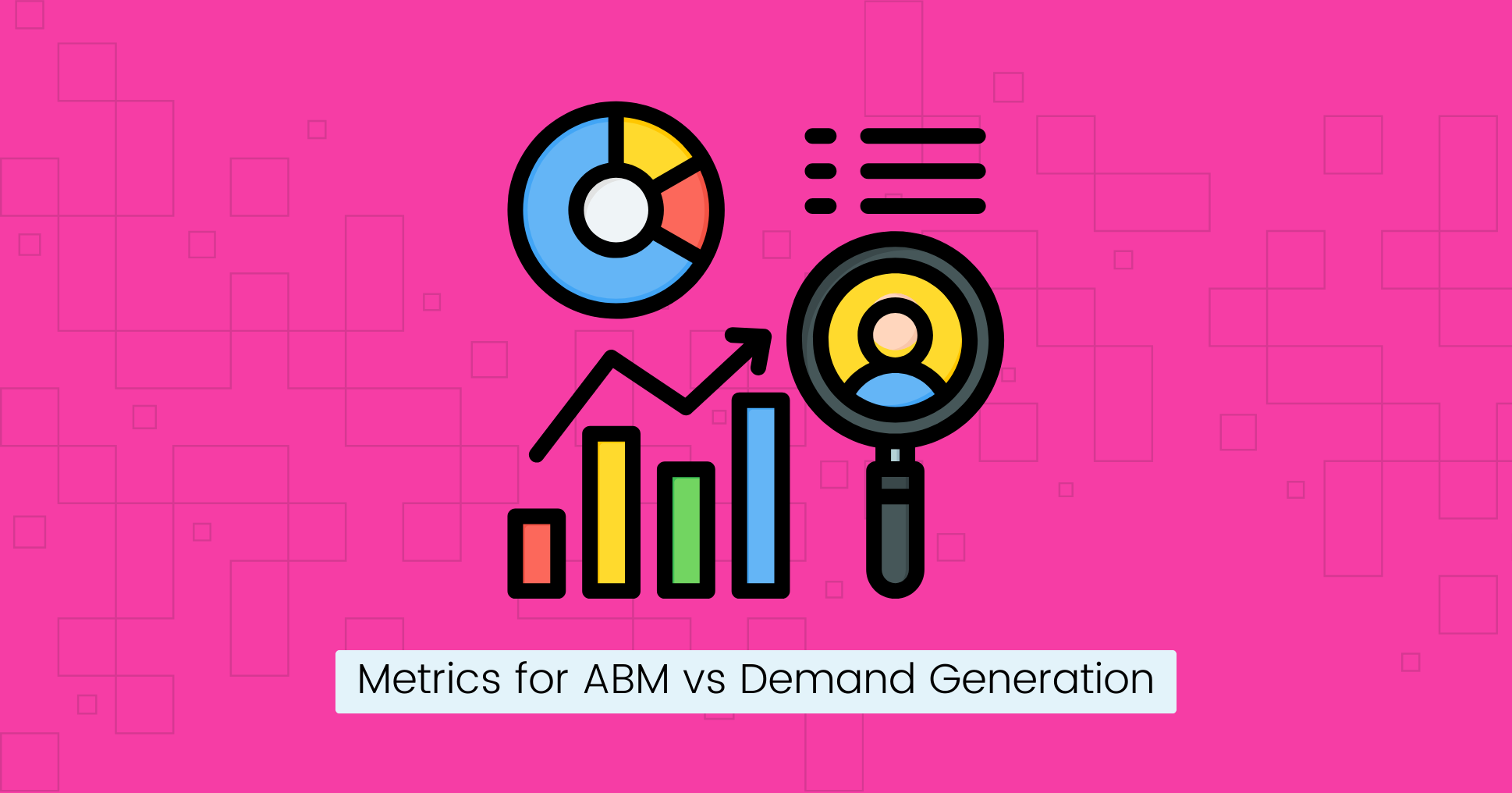
ABM focuses on account-level metrics such as:
- Engagement level: Track how actively the targeted accounts interact with your product using factors such as website visits and email interactions.
- Conversion rate: Find the percentage of accounts progressing through the sales funnel and converting into customers.
- ROI: Overall revenue generated from targeted accounts.
- Customer lifetime value (CLV): Total revenue generated from a single customer, used to measure the success of the ABM campaign.
- Average Revenue per Account (ARPU): You usually focus on high-value customers.
Demand Generation focuses on lead-based metrics such as:
- Website traffic: How many people visit your website? It is your top-of-funnel metrics.
- Lead generation: Number of leads your demand gen marketing activities generate.
- Customer Acquisition Cost (CAC): Total cost used to acquire a new customer. Helps to create a budget-friendly marketing campaign.
- Marketing Qualified Leads (MQL): Measure the number of qualified leads and their engagement with your marketing content.
- Sales Qualified Leads (SQL): Find the number of leads approved for direct follow-up and further engagement by your sales team.
By tracking these metrics, you can evaluate the performance of your marketing and sales efforts to identify areas for improvement and optimize your marketing strategies for better results.
Alignment between Sales and Marketing
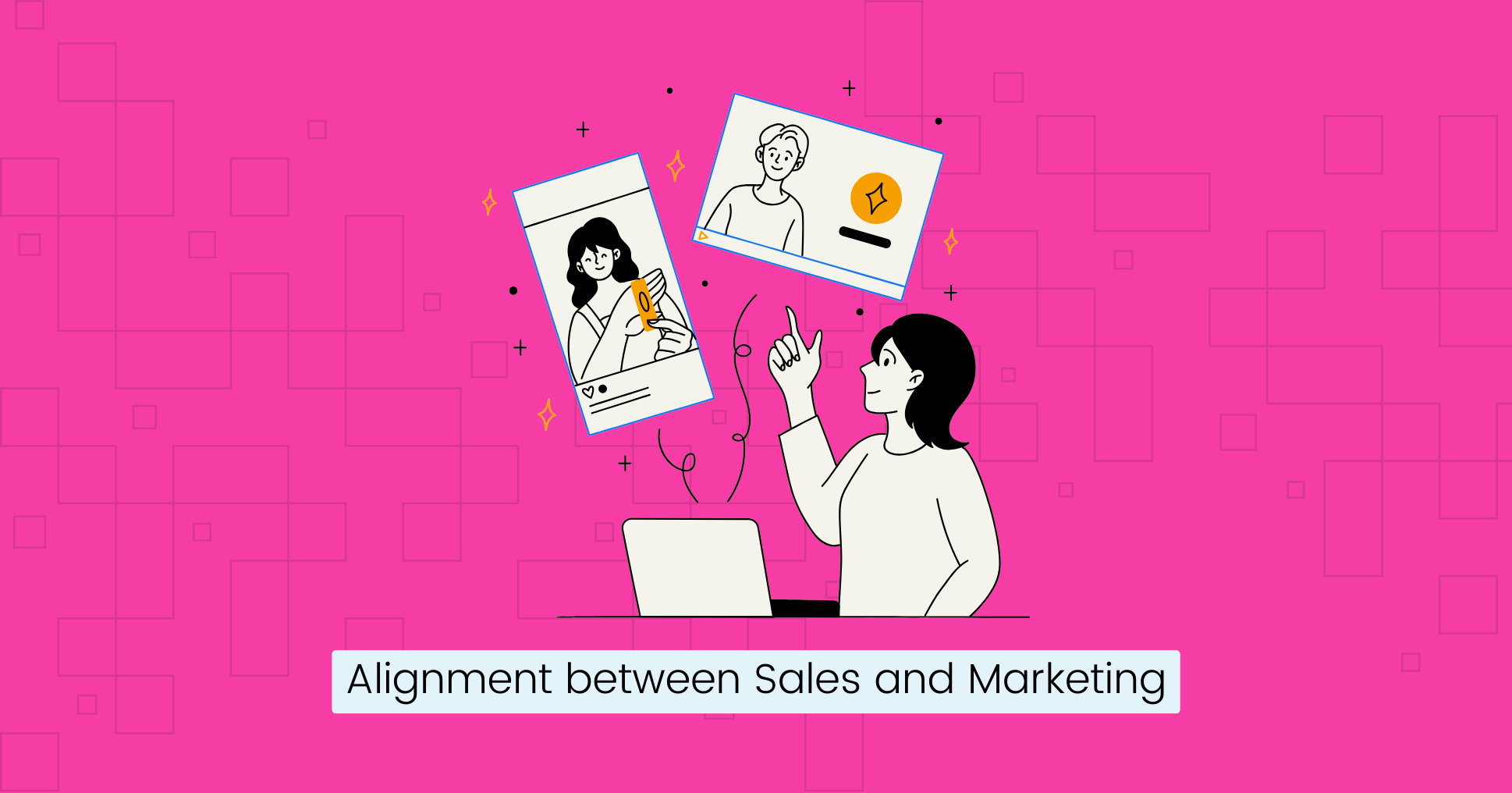
Both account based marketing and demand generation involve aligning sales and marketing efforts based on your company’s goals and priorities.
In ABM, sales and marketing teams work closely to find target accounts and coordinate outreach efforts to nurture relationships and drive revenue.
Marketing identifies and connects with potential customers and creates custom content according to their pain points.
At the same time, the sales team provides insights into their unique needs for a more personalized strategy.
Demand Generation focuses more on generating a high volume of leads, so the marketing team creates interest and awareness to attract leads, which are passed on to the sales team for follow-up.
Sales Cycle
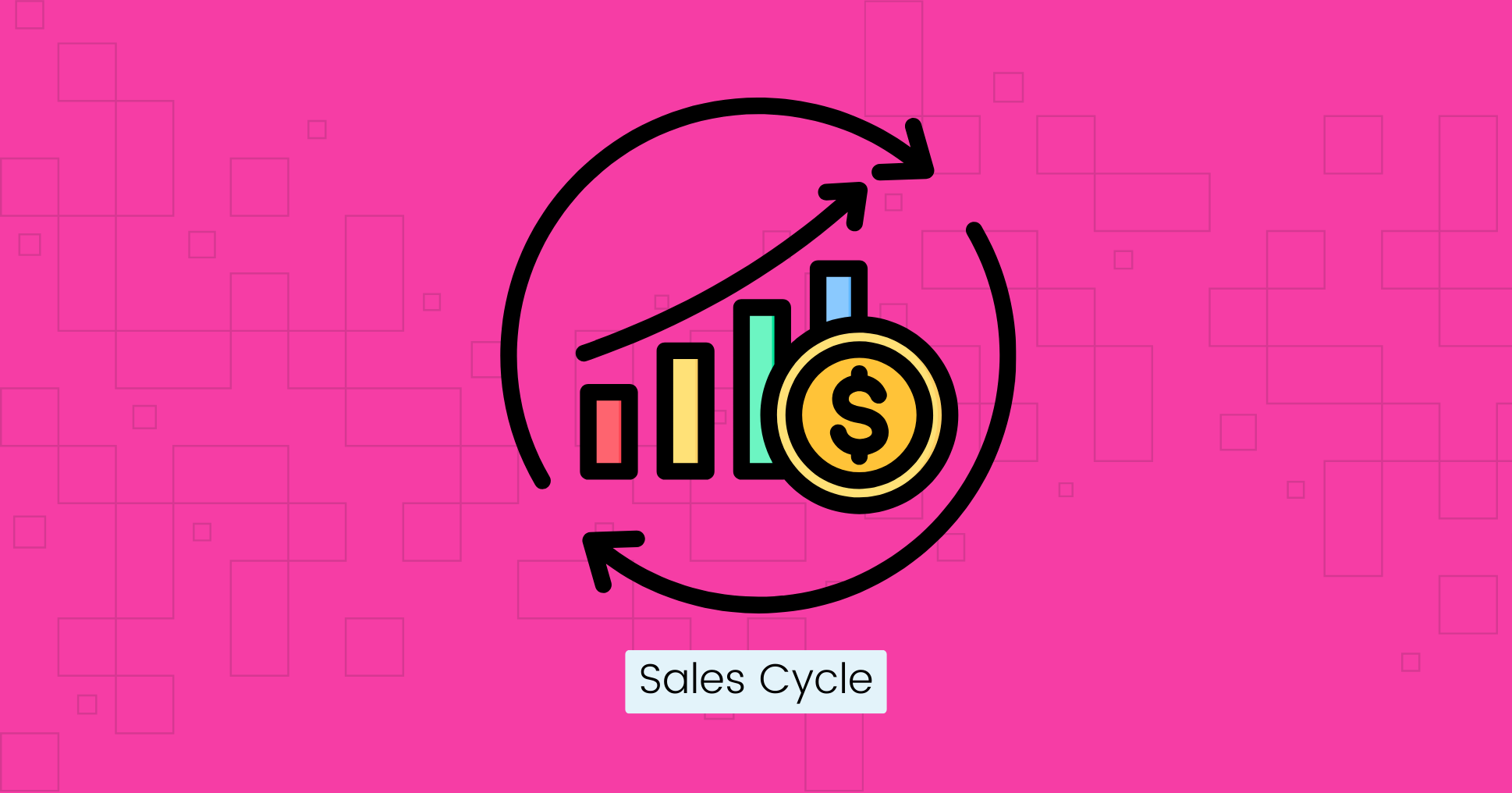
ABM targets high-value accounts, often with longer and more complex sales cycles.
The sales process may require more time due to strategic planning for research, personalized content, and customized outreach efforts.
This results in:
- Higher conversion rates.
- Higher ROI. Even so, you will have a high cost per acquisition, but the high revenue per account will offset it.
- Build long-term relationships.
Demand generation targets a broader audience and aims to generate interest and leads more quickly.
The sales cycle for demand generation tends to be shorter and may result in:
- Higher volume of leads in a shorter amount of time.
- Lower ROI due to broad target approach.
- More focused on immediate conversions and less on building long-term relationships.
Which one should you choose: ABM or demand Generation?
The marketing strategy you should choose depends on your specific business goals.
ABM is best for:
- SaaS companies with few high-value accounts or a niche target market.
- SaaS with enterprise plan, with at least $1k LTV. ABM is expensive, and you need high revenue potential to justify it.
- Your product offers a personal touch for targeted accounts. Like enterprise custom plans.
- Making strong relationships with important customers.
- Companies with a sales team, 24/7 support, and SOC compliance will help close the big enterprise clients.
Demand gen is best suited for:
- Companies targeting a broader audience or looking to generate leads at scale.
- Your product has a widespread appeal.
- You want a mass outreach to make your product well known.
Or you could use a combination of ABM and Demand Gen for maximum effect, depending on your goals, resources, and target market.
It is sometimes feasible to combine both approaches.
If your SAAS targets different segments, you can use ABM for high-value segments and demand Gen for others.
Closing in a few enterprise clients is a great social proof to help convert more people.
Final Words
Demand Generation and ABM are B2B marketing strategies with unique strengths and approaches for lead generation.
It all depends on what you want: quality or quantity.
Whether you want to create a personalized experience with ABM or reach a broader audience with Demand Gen to create brand awareness, both strategies are tools you can use to find customers.
FAQs
Which demand generation tactics can be effective for B2B SaaS companies?
B2B SaaS companies can benefit from demand-generation tactics such as creating quality content, marketing automation, and implementing targeted outbound marketing strategies.
How do successful ABM campaigns contribute to the demand for your product?
Successful ABM campaigns contribute to demand by focusing on specific high-value accounts and generating personalized interactions that are more likely to increase interest and demand for your product.
What tools should I use for ABM?
To run successful ABM campaigns, you need tools like CRM to monitor leads at the account level and LinkedIn Sales Navigator to find relevant leads. Check out our curated list of Growth Hacking tools for more options.
Is demand Generation relevant for B2B?
Demand generation initially comes from the B2C marketing playbook but is also highly relevant in B2B. Demand generation is necessary if you target small and medium-sized businesses (SMBs).

